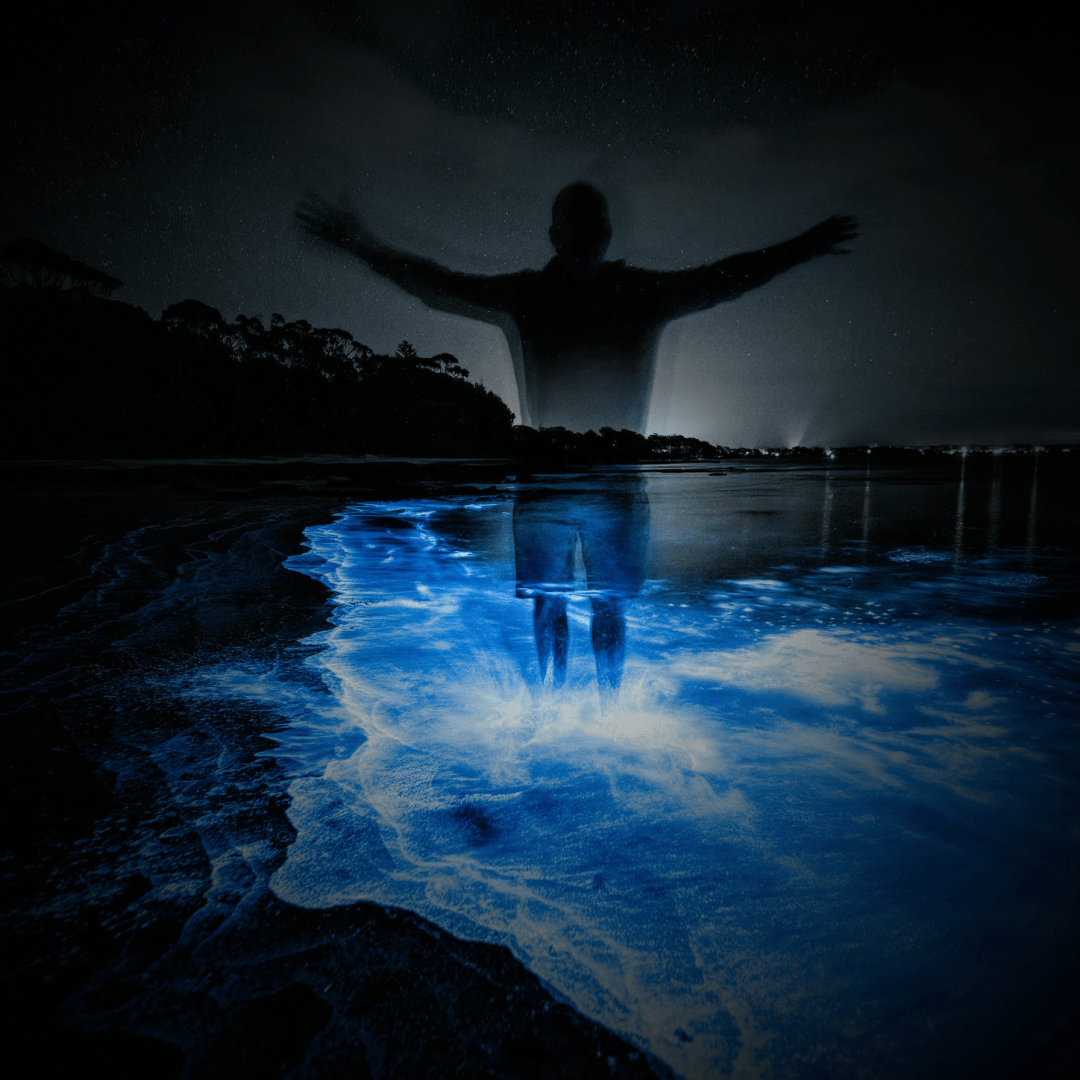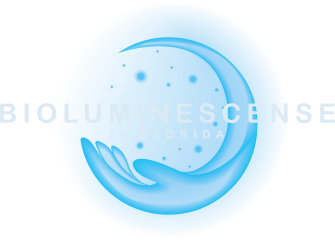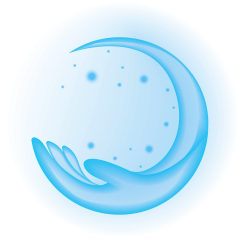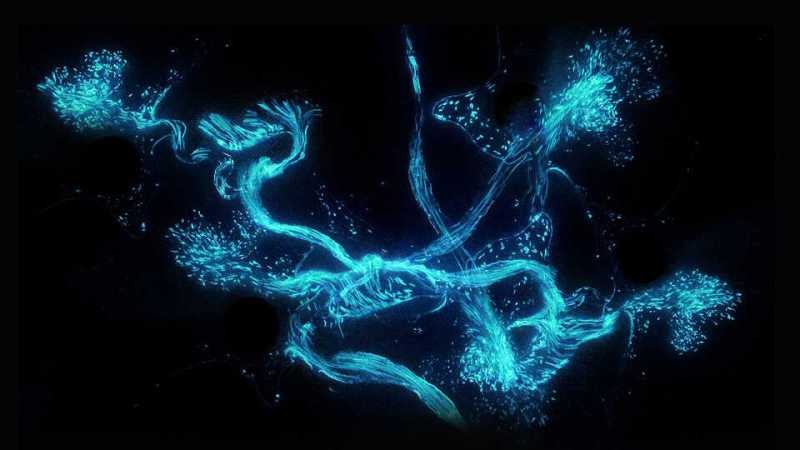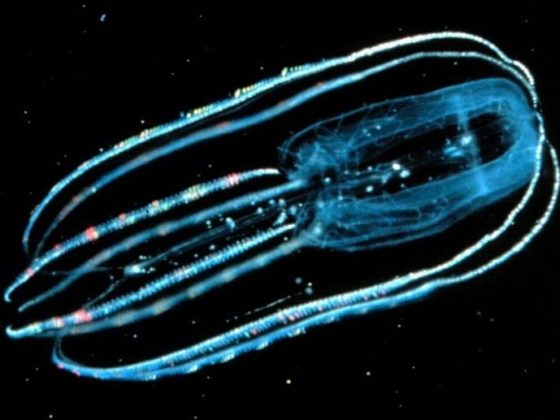WHAT ARE BIOLUMINESCENT DINOFLAGELLATES?
There are bioluminescent species that are capable of producing (synthesizing) their own luciferin. For example, dinoflagellates emit a bioluminescent glow that is bluish-green in color. Dinoflagellates that emit a bioluminescent glow are a form of plankton. Plankton are microscopic marine organisms that can sometimes make the surface of the ocean sparkle when viewed at night.
There are also bioluminescent species that do not produce luciferin in their bodies. Instead, they take it in through other species, either as a source of nutrition or as part of a mutualistic partnership. For example, certain types of midshipman fish get their luciferin supply from the “seed shrimp” they eat. In the light organs of many marine species, such as squid and other mollusks, bioluminescent bacteria can be found. There is a mutually beneficial link between the bacteria and the squid.
Fluorescence should not be confused with the phenomenon known as bioluminescence. The process of florism does not include any kind of chemical reaction. The process of fluorescence involves the absorption and subsequent emission of a stimulating light. Only when the fluorescing light is present can the stimulating light be seen by the human eye. Highlighter pens make use of a bright ink that fills the pen. Phosphorescence is quite similar to fluorescence, with the key difference being that phosphorescent light may continue to re-emit light for considerably longer than fluorescent light can. Phosphorescence is the property that gives glow-in-the-dark stickers their glow.
Bioluminescent dinoflagellates grow mostly in warm-water lagoons with smaller entrances to the ocean. This is because the bioluminescent dinoflagellates congregate in these lagoons or bays, and the limited entrance prevents them from leaving. During the night, the entire lagoon can be lit. The Merritt Island National Wildlife Refuge is filled with these lagoons which is why we would rank it the #1 place in the USA to see bioluminescence. Discover the alluring bioluminescence of Florida by reading about the activities and locations on our site!
DID YOU KNOW? Red mangroves (broad-leaved evergreen trees) give off a bacteria into the water that is used as a critical vitamin to dinoflagellates. It’s no coincidence that our top list of places to see bioluminescence in Florida all have red mangroves in their habitats!
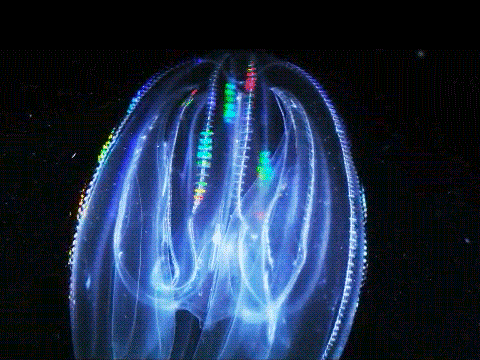
Comb jellies are transparent jelly-like invertebrates that have eight rows of comb-like plates of iridescent bands. A comb jelly is actually not a jellyfish. They cannot sting you as they do not have any stinging tentacles. These comb jellies usually will be seen in sizes that vary from a grape to a grapefruit with most similar to the size of a golf ball. The comb plates are what propel the comb jelly through the water. Although they do not move fast they are often hard to spot since they are transparent. At night time if you’re lucky enough you can see comb jellies glowing as they are moving through the water. They produce photoproteins which is what allows comb jellies to glow.
Comb jellies are extremely delicate and should only be handled by professionals with extreme care. The best way to view a comb jelly is with a clear container by gently allowing the water containing the comb jelly to flow into the container. Once obtained, do not shake or disturb the container as this can damage or harm the comb jelly. Hold a light up to the clear container to get the best view of the comb jelly and its unique features.
Genes that code for the production of photoproteins provide comb jellies their ability to produce light. A photoprotein is a combination of the light-generating molecules luciferin and luciferase. When calcium is introduced, this molecule is catalyzed into producing light.
THE BEST PLACES TO FIND BIOLUMINESCENCE IN FLORIDA
Choosing the right location is a key factor when trying to find bright bioluminescence. You want to look for locations that typically have calmer waters, no artificial light pollution, mangroves, and warm water temperatures. These are the best places for bioluminescence viewing in Florida:
- Merritt Island National Wildlife Refuge (Haulover Canal + Beacon 42)
- Cape Canaveral
- Cocoa Beach
- Indian River Lagoon in Titusville (Mosquito Lagoon)
- Banana River in Merritt Island
- Fort De Soto County Park
- Shell Key Preserve
- Parrish Park in Titusville
- Safety Harbor near Tampa Bay
- Fort Pierce Inlet State Park
